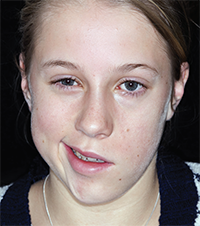In a study on managing older patients with cochlear implants, Harold Pillsbury, MD, chair of otolaryngology–head and neck surgery at the University of North Carolina School of Medicine in Chapel Hill, said he and his team of investigators wanted to glean insights into how the care of patients older than 80 could be better managed (see “Considerations for Older Adult CI Recipients,” below).
Explore This Issue
June 2017Through a retrospective chart review, the investigators found that the most common problem with the octo- and nonagenarian patient group was loss to follow up, with 23% not returning for routine follow-up appointments. Many patients, he said, only came back if their equipment failed. Lack of follow-up was often associated with transportation challenges, he added.
Advanced age, he reminded the audience, is not a barrier to the procedure. “One of the things that goes on is, if you operate on somebody who’s over 65, you’re going to figure out that they’re going to be 90 one day and what are you going to do about it?” he said.
At his center, which has performed more than 3,400 cochlear implants for patients of all ages, patients are seen every two weeks until their performance assessment is sufficient, then every six months until stability is maintained. The center requests that older patients be accompanied by a significant member of the family “so that we can really monitor what’s going on.” Additionally, large images of the equipment and the controls also make it easier to teach patients how to use the remote control, he said.
A key to treating this population, he added, has been the use of telemedicine and the training of staff at satellite locations to make it easier for patients to be seen quickly. “This is the new way of doing it,” Dr. Pillsbury said, “and it really has made a difference for us.”
Is There a Good Side? The Role of Laterality in Facial Paralysis Severity Perceptions

Unilateral paralysis of the face.
© Dr P. Marazzi / Science Source
A randomized study has found that observers showed no preference for one side of the face over the other when viewing pictures of patients with facial paralysis, said presenter Jason Nellis, MD, a resident in otolaryngology-head and neck surgery at Johns Hopkins School of Medicine in Baltimore. The results come despite prior studies that suggested an observer preference for the left side.
In the study, naïve observers completed an online survey with photos of faces with a completely paralyzed left side or right side. For each photo of a face, a photo with a horizontal mirror image was created to control for aesthetic factors beyond the paralysis. A total of 164 observers rated the affect, attractiveness, perceived impairment, and facial paralysis severity.